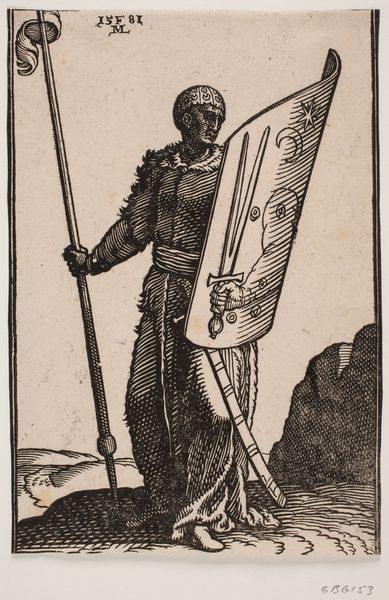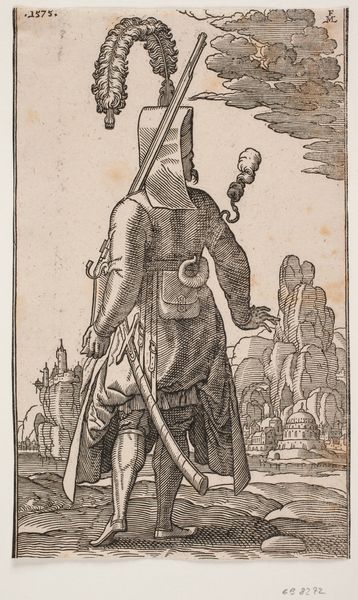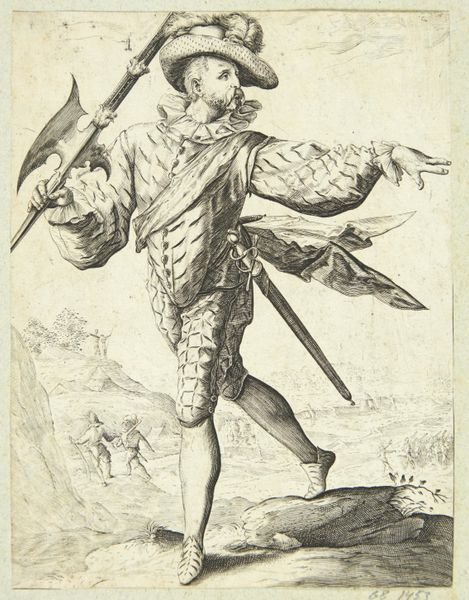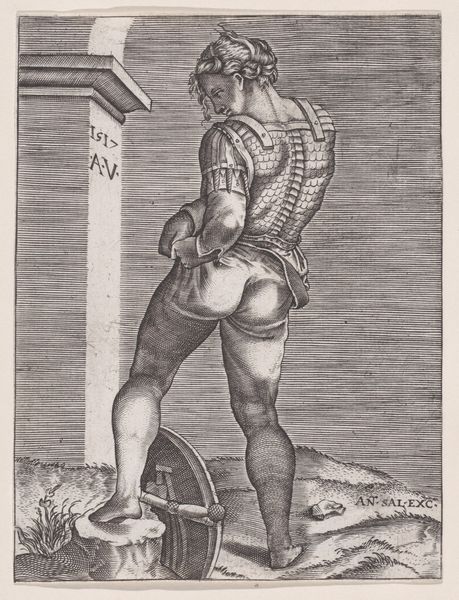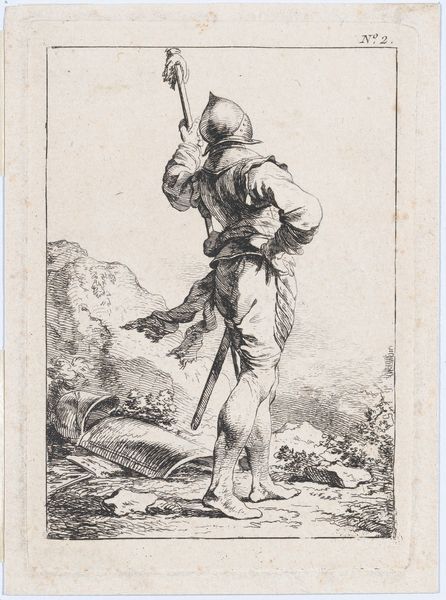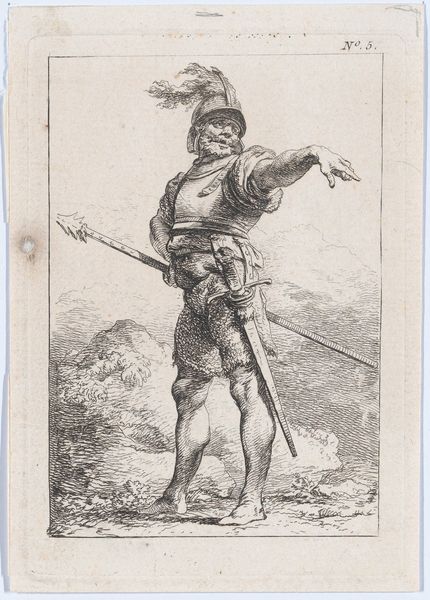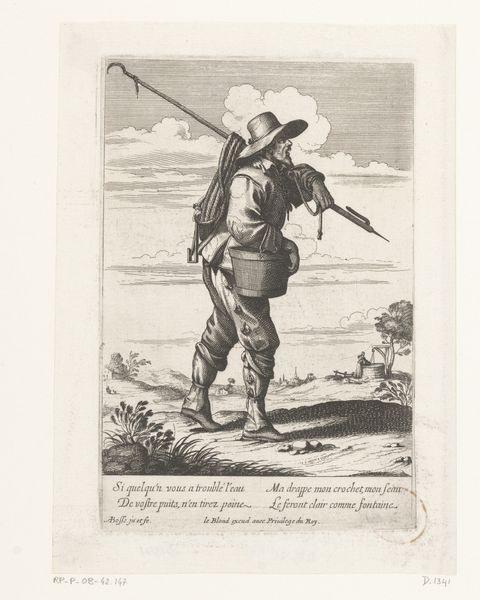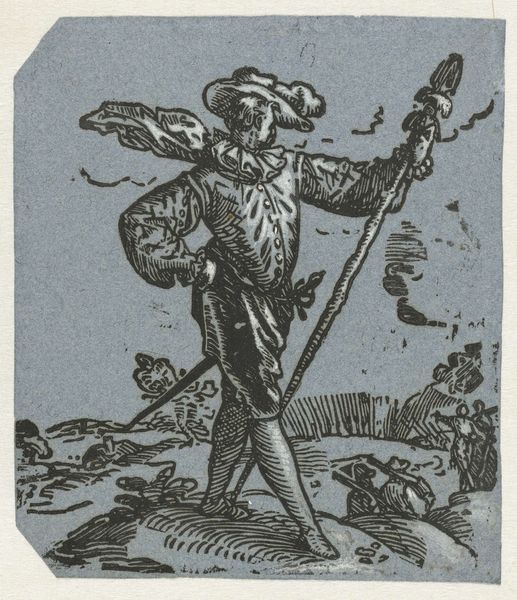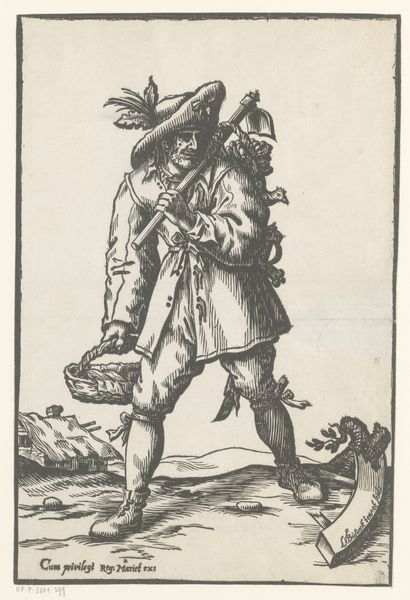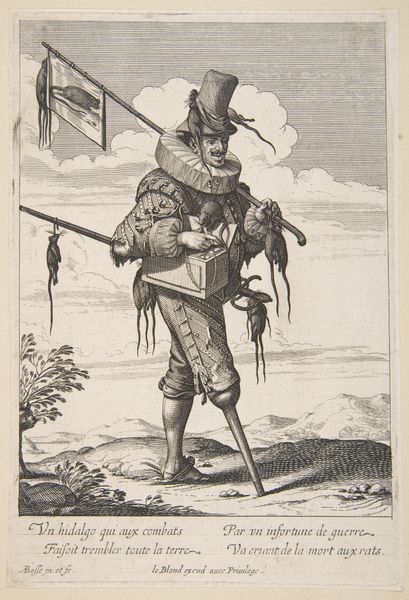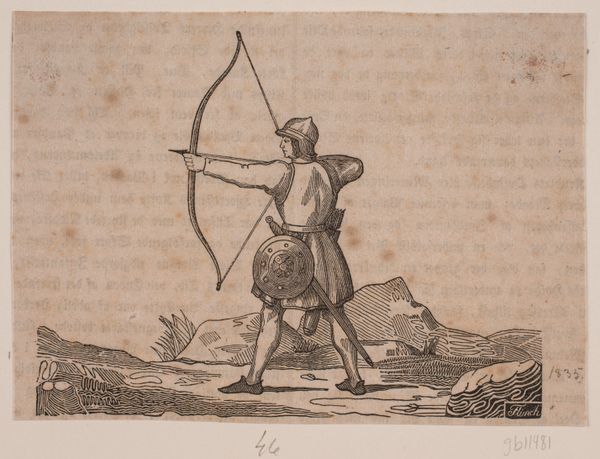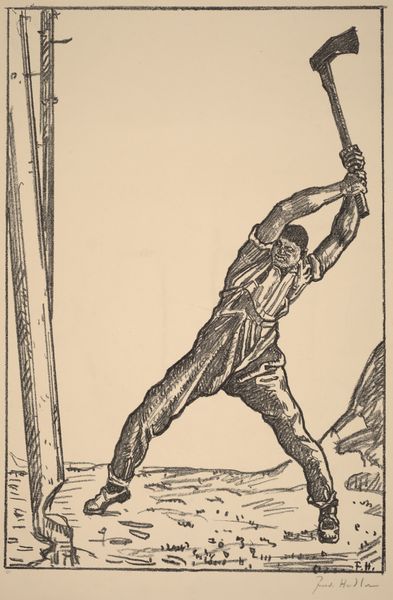
Løbende budbringer, set bagfra, i klippelandskab; i v. hånd en bue, et bundt pile er stukket ned i bæltet, i en snor over skulderen et futteral 1576
0:00
0:00
print, woodcut
# print
#
landscape
#
mannerism
#
figuration
#
woodcut
#
history-painting
Dimensions: 186 mm (height) x 133 mm (width) (bladmaal)
Editor: This woodcut from 1576 by Melchior Lorck, titled "Running Messenger, Seen From Behind, in a Rocky Landscape," really strikes me with its sense of movement despite the stillness of the medium. He seems almost frozen in a very animated step. How might this image be received in the socio-political context of its time? Curator: That's a fantastic observation. What interests me most about this piece is indeed the artist's choices to represent an Ottoman figure, most clearly visible via the turban. Melchior Lorck actually served as a diplomat in Constantinople, granting him unique insight. This image, created amidst rising political and cultural tensions between Europe and the Ottoman Empire, challenges the way such people are portrayed and circulated in public. What message, or public role, might an image like this have played? Editor: I suppose, given the tensions, the image normalizes, even humanizes, someone who was seen as an "other." Would this be seen as subversive in any way? Curator: Exactly! It's not necessarily subversive, but it presents a counter-narrative. He is a messenger – an individual doing a job and existing in his environment. Rather than focusing on sensationalist depictions of Ottoman figures often favored at the time, Lorck's emphasis humanized them by showing them simply existing, working, or traveling in the landscape, potentially provoking viewers to see beyond prevailing prejudices. Consider how printmaking itself facilitated the spread of these ideas – this piece can exist anywhere, cross any borders. Do you see the implications here? Editor: I think I'm beginning to. It allowed for a much wider audience to come to their own judgements, rather than having them imposed by the establishment, the elites, or popular narratives. Curator: Precisely. Lorck gave agency back to the viewers, but he also allowed himself the freedom of showing these people as who they might simply be – humans living and doing. Editor: That's so interesting; I've definitely learned a lot. Thank you for your insights. Curator: Likewise. Thinking about the political and social role of images always adds layers of meaning to our interpretations, I find.
Comments
No comments
Be the first to comment and join the conversation on the ultimate creative platform.

